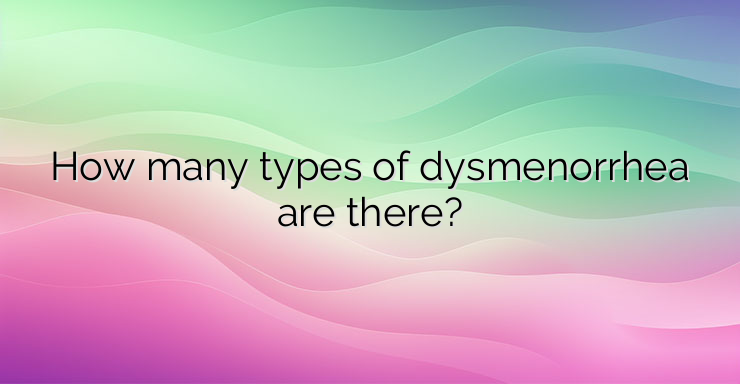Dysmenorrhea is the medical term for painful menstruation, which can include cramping, nausea, fatigue, and diarrhea. It usually occurs before or at the beginning of the menstrual cycle and usually subsides after two or three days. Mild to moderate pain is normal, but some people experience pain so severe that it prevents them from leading a normal life. Treatment with drugs and other methods can help relieve the symptoms of painful periods. Dysmenorrhea is divided into two main types: primary and secondary. 1. Primary dysmenorrhea: This type of dysmenorrhea is associated with menstrual cramps that appear after menarche, accompany each cycle and are not caused by another disease. The pain is usually felt in the lower abdomen, back or thighs, starts one or two days before the start of the period or when the bleeding starts, and usually disappears after two or three days. 2. Secondary dysmenorrhea: This type of dysmenorrhea occurs as a result of other medical problems or infections in the reproductive organs. The pain usually starts earlier in the menstrual cycle and lasts longer than regular menstrual cramps. For example, the pain may appear a few days before the monthly cycle and continue until the bleeding stops. This type of dysmenorrhea is less common. It is normal to feel some pain during menstruation. About 60% of women of reproductive age experience mild cramping during their period. Between 5 and 15% of them report pain so severe that it affects their daily activities. This percentage is likely higher because many women do not report menstrual pain. Period pains usually lessen over time, and for some women, they improve after childbirth. Symptoms of dysmenorrhea include abdominal pain, often throbbing and severe, a feeling of pressure in the abdomen, pain in the hips, pain in the lower back and inner thighs, and other symptoms such as nausea, dizziness, and headache. The pain usually starts 24 to 48 hours before your period starts and subsides within 48 hours after. Secondary dysmenorrhea most often results from conditions such as endometriosis, adenomyosis, fibroids, pelvic inflammatory disease, cervical stenosis, or congenital conditions that affect the reproductive organs. Several methods can be used to relieve menstrual cramps: Taking non-steroidal anti-inflammatory drugs – some drugs can be bought without a prescription and are effective in reducing pain; Hormonal drugs – hormonal preparations in the form of pills, patches or vaginal rings can reduce pain during menstruation. Alternative methods – using a warm heating pad, avoiding caffeine and alcohol, massaging the abdomen and lower back, and regular exercise are other methods of pain relief. In case of secondary dysmenorrhea,A doctor may suggest additional treatments or a surgical approach depending on the cause of the condition. References https://my.clevelandclinic.org/health/diseases/4148-dysmenorrhea


Leave a Reply